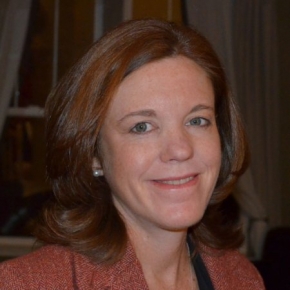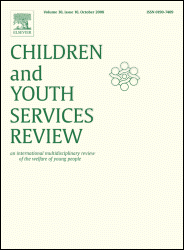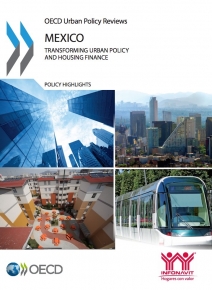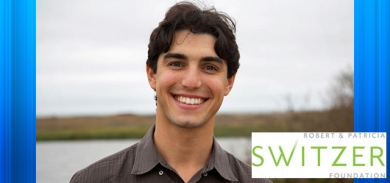
By Steve Commins, Associate Director of GPA@UCLA Luskin, and Urban Planning Lecturer
Nepal is a country that is currently labeled ‘post-conflict’. But after two civil wars, one driven by an armed insurgency which later allied with a non-violent democratic movement, and the second spurred on by ethnic tensions in communities bordering India, the Nepalese still struggle with the daily tasks of building a new political system. The label ‘post-conflict’ is a designation that belies the complexities of the country’s status and what is required for a long term, peaceful, political settlement.
Nepal currently faces both deeply rooted forms of poverty and economic exclusion. India, which borders the country, has had a major hand in its economic options, and the country receives a significant amount of international ‘aid.’
Nepal occupies a particular niche in the “aid business”, as it is not a ‘strategic’ conflict like Afghanistan, it is not an aid orphan like the Central African Republic nor is it an aid darling like South Sudan recently. As a result, Nepal exists within the broad sweep of countries that have been labeled ‘post-conflict’ by the United Nations and other agencies, and, in the current jargon, a ‘Fragile and Conflict Affected State’.
In the late 1990s, chastened by the failure of the UN and major political powers to effectively address the human catastrophes of the civil wars in Somalia, Rwanda and Bosnia, as well as the limits of ‘democratization’ and ‘good governance’, a number of international agencies began to give more serious attention to what eventually became labeled ‘Fragile and Conflict Affected States’.
The premise of this approach is that there are complex, historic reasons why states have different forms of violent political conflict and political fragmentation, and there are also situations where states may experience the decay of public institutions even without overt violent conflict. This means that the UN and donor agencies have to address the underlying causes of ‘fragility’ rather than just provide humanitarian (neutral) aid – or as one observer put it, a ‘humanitarian fig leaf’.
Much literature has been devoted to debating ‘fragile’, ‘failed’ and ‘failing states’. Frequently it misses the mark by not delving into the historic specifics of a country or region, or descending into superficial explanations like ‘these communities never got along’ or the government was doomed from the start’ – explanations that lack depth or insight into the nuances of the specific reasons and dynamics of fragility.
At the same time, the role of international agencies, which sometimes (but not always, hence the term ‘aid orphans’) provide large amounts of finance for both short-term ‘humanitarian’ assistance and longer-term ‘post-conflict’ reconstruction, poses another challenge. The problem with this approach is that donor agencies are making decisions on what to label a specific situation rather than the messy realities of politics (again, sadly, South Sudan’s collapsed political settlement comes to mind). Donor time frames and real politics rarely cohere.
As part of a four-country study on the impact of Community Driven Development projects on livelihoods in FCAS (Afghanistan, Pakistan, Sri Lanka and Nepal), I worked with the lead Nepalese researcher on the initial interviews and inception for the country study.
Landing in Nepal’s capital Kathmandu provides no haunting images of war or political turmoil. On appearance the country is back in business. Indeed, fortunately for the country, the Maoists involved in the first civil war did not engage in the level of violence or social destruction found in some other countries (up to 20,000 people died, so ‘level’ is a sadly relative term). The Maoists currently function as a political party similar to the FMLN (Farabundo Martí National Liberation Front) in El Salvador or FRELIMO (Mozambique Liberation Front), which moved into the political process after the peace agreements in their countries.
But talk for any amount of time with Nepalese and a complex picture of hopes and aspirations as well as uncertainties about a very nascent political system emerges. The politics of geography, as it were (Mountains, Hills, Terai), the debates about federalism (too much or too little depending on the individual) and the problematic aspects of nation state building and agreeing on the ‘imagined community’ that remain unresolved.
In the end, whatever label is applied by international donors, Nepal remains a country that has an evolving, contentious and sometimes fraught political process. Perhaps the label should be changed to ‘post-violent conflict’ (though different forms of violence frequently morph into criminality after the overt political violence has been reduced) as in reality all effective political settlements do not end conflict, rather they provide mechanisms that at best may achieve general acceptance for ways of addressing inevitable disagreements in non-violent, democratic and equitable ways.
This can only be seen from the ground up, as each violent conflict or manifestation of state fragility has its own history, meaning and narratives.
‘Post’ is a label of hopefulness about a better future, a short-hand for donors to change how they give aid, and, perhaps, a step towards a political settlement that works better for more people than the previous one.
Original post at http://global.luskin.ucla.edu/

 The Rosalinde and Arthur Gilbert Foundation has a awarded a grant of approximately $80,000 to the Luskin Center to develop a “how-to” manual for community-driven greenway projects along the Los Angeles River. Recognizing the vast untapped potential for accessible active transportation and healthy recreational opportunities along the River, and several decades of progress already made by community-based non-profits and local government in the northern part of the River, the Luskin Center set out to compile, analyze and repackage decades of institutional wisdom into an accessible and application-oriented guide called a “toolkit.” This toolkit will present step-by-step instructions for community leaders interested in developing: 1) a multi-modal linear pathway along the Los Angeles River, 2) a River-adjacent green open space, 3) a neighborhood access point or 4) a multi-modal bridge to improve access across the River.
The Rosalinde and Arthur Gilbert Foundation has a awarded a grant of approximately $80,000 to the Luskin Center to develop a “how-to” manual for community-driven greenway projects along the Los Angeles River. Recognizing the vast untapped potential for accessible active transportation and healthy recreational opportunities along the River, and several decades of progress already made by community-based non-profits and local government in the northern part of the River, the Luskin Center set out to compile, analyze and repackage decades of institutional wisdom into an accessible and application-oriented guide called a “toolkit.” This toolkit will present step-by-step instructions for community leaders interested in developing: 1) a multi-modal linear pathway along the Los Angeles River, 2) a River-adjacent green open space, 3) a neighborhood access point or 4) a multi-modal bridge to improve access across the River.




 As the new year begins, the Luskin Center for Innovation prepares for two exciting projects recently funded by the California Energy Commission (CEC). In response to the Program Opportunity Notice (PON) entitled “Advancing Utility-Scale Clean Energy Generation”, the Luskin Center has teamed with UC San Diego, San Diego Gas and Electric and others to deploy high accuracy, short-term solar forecasting technologies to allow commercial and industrial ratepayers to maximize their available rooftop space for solar photovoltaic by co-optimizing their electrical demand load with
As the new year begins, the Luskin Center for Innovation prepares for two exciting projects recently funded by the California Energy Commission (CEC). In response to the Program Opportunity Notice (PON) entitled “Advancing Utility-Scale Clean Energy Generation”, the Luskin Center has teamed with UC San Diego, San Diego Gas and Electric and others to deploy high accuracy, short-term solar forecasting technologies to allow commercial and industrial ratepayers to maximize their available rooftop space for solar photovoltaic by co-optimizing their electrical demand load with 
